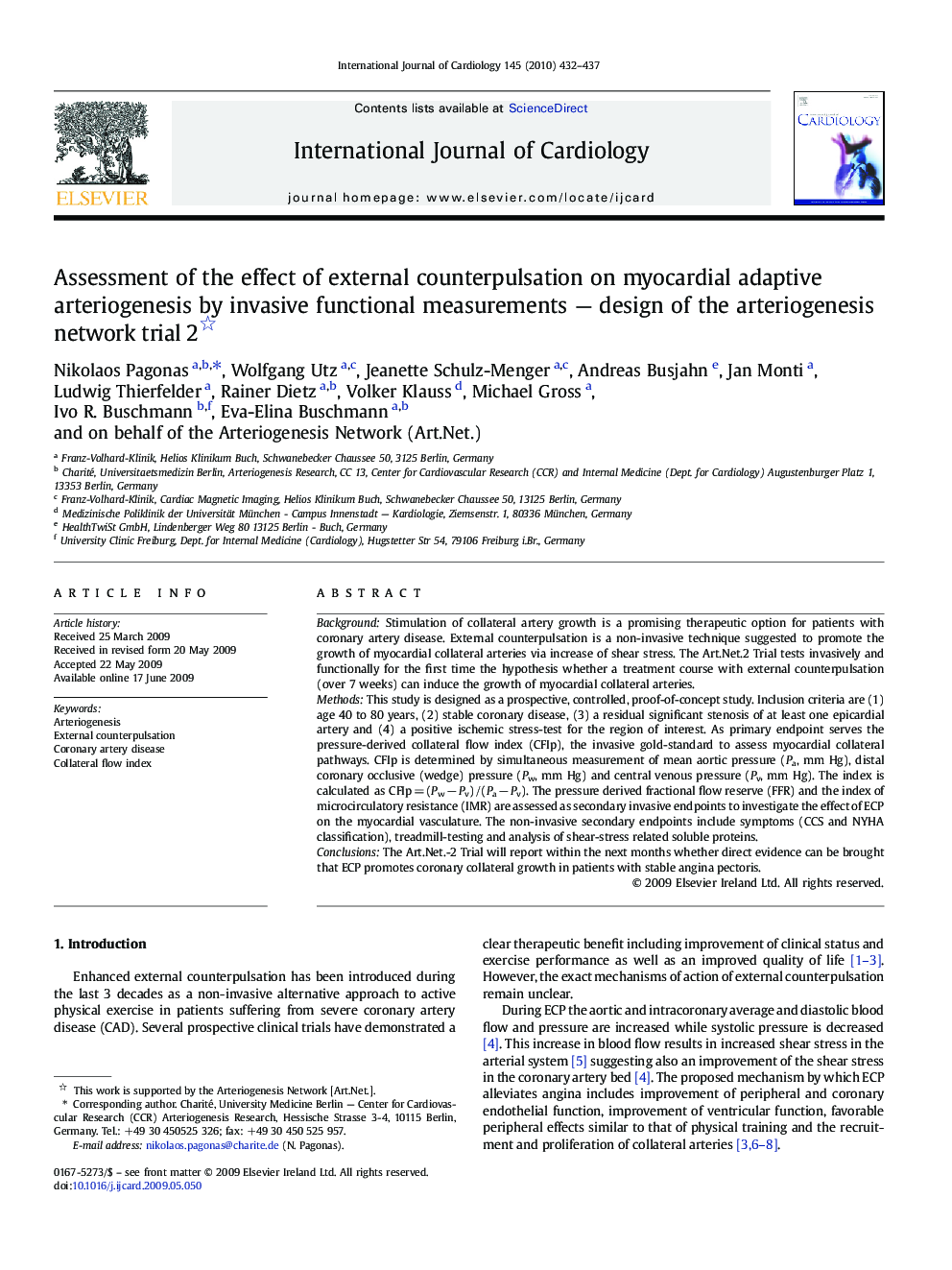| Article ID | Journal | Published Year | Pages | File Type |
|---|---|---|---|---|
| 2931452 | International Journal of Cardiology | 2010 | 6 Pages |
BackgroundStimulation of collateral artery growth is a promising therapeutic option for patients with coronary artery disease. External counterpulsation is a non-invasive technique suggested to promote the growth of myocardial collateral arteries via increase of shear stress. The Art.Net.2 Trial tests invasively and functionally for the first time the hypothesis whether a treatment course with external counterpulsation (over 7 weeks) can induce the growth of myocardial collateral arteries.MethodsThis study is designed as a prospective, controlled, proof-of-concept study. Inclusion criteria are (1) age 40 to 80 years, (2) stable coronary disease, (3) a residual significant stenosis of at least one epicardial artery and (4) a positive ischemic stress-test for the region of interest. As primary endpoint serves the pressure-derived collateral flow index (CFIp), the invasive gold-standard to assess myocardial collateral pathways. CFIp is determined by simultaneous measurement of mean aortic pressure (Pa, mm Hg), distal coronary occlusive (wedge) pressure (Pw, mm Hg) and central venous pressure (Pv, mm Hg). The index is calculated as CFIp = (Pw − Pv) / (Pa − Pv). The pressure derived fractional flow reserve (FFR) and the index of microcirculatory resistance (IMR) are assessed as secondary invasive endpoints to investigate the effect of ECP on the myocardial vasculature. The non-invasive secondary endpoints include symptoms (CCS and NYHA classification), treadmill-testing and analysis of shear-stress related soluble proteins.ConclusionsThe Art.Net.-2 Trial will report within the next months whether direct evidence can be brought that ECP promotes coronary collateral growth in patients with stable angina pectoris.
